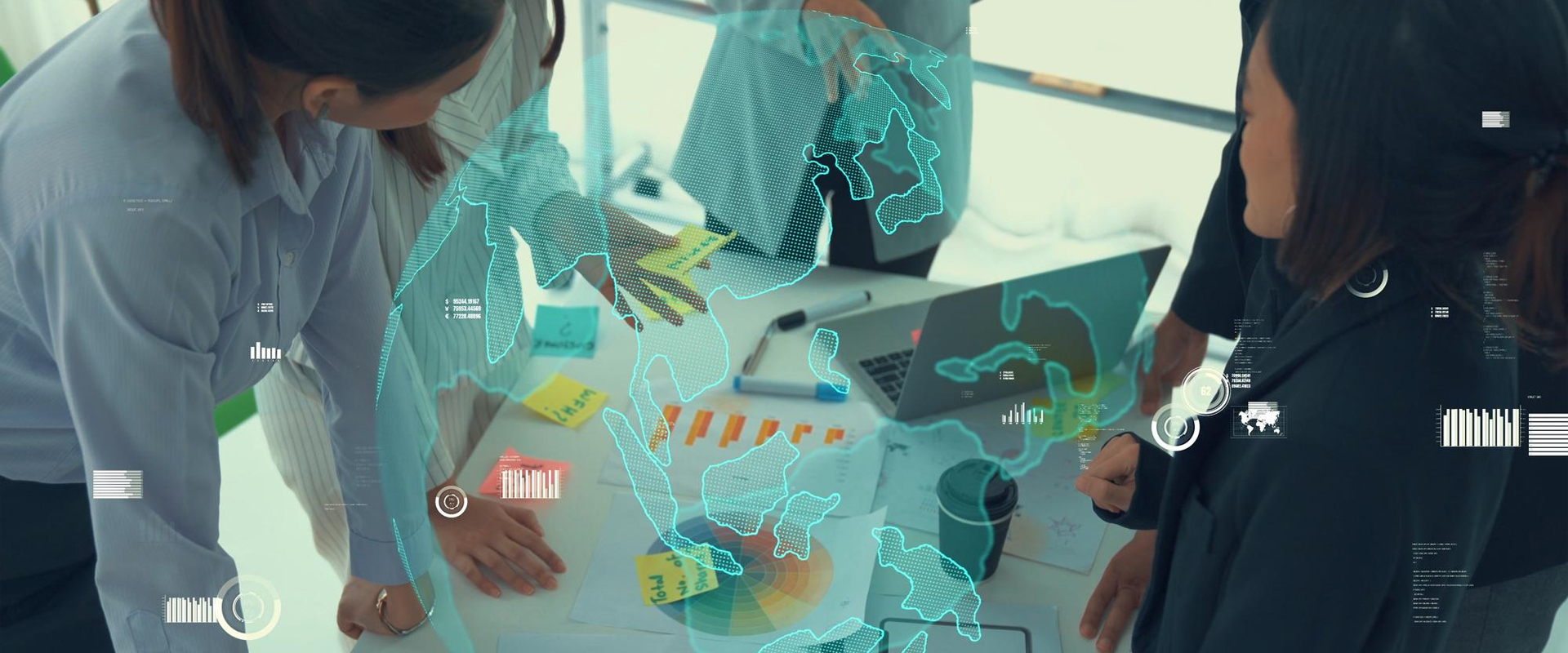

Electronic Data Capture (EDC) Systems for Clinical Trials
Last Updated on November 29, 2024
Introduction
Clinical trials play a paramount role in developing the understanding of a novel drug, treatment, or medical instrument. Biostatisticians can gain a glimpse of a clinical study with the aid of clinical data analysis. Furthermore, this data is derived from Case Report Forms (CRFS), which contain details of trials from each patient. But, with loads of generated data, how can you keep track of the clinical study?
Simply speaking, the solution lies in the digitization of the collection system called Electronic Data Capture (EDC) Systems for Clinical Trials. Stay with us as we guide you through the technological intersection with clinical trials.
Basics of Electronic Data Capture (EDC) Systems for Clinical Trials
Before the technological intervention, Researchers would write CRFs manually. Then they would pack into boxes and transport them from one trial location to another for analysis. It would cost a fortune. Moreover, it costs the researchers time and energy to gain knowledge about a specific clinical study.
Therefore, Electronic Data Capture (EDC) Systems for Clinical Trials are the best solution for optimizing clinical studies anywhere. Furthermore, it streamlines the data collection and distribution system, improving efficiency and reliability.
Electronic Data Capture (EDC) systems are software designed to automate the clinical trials data collection system. They aid in collecting and managing data in clinical trials. Moreover, this system improves efficiency by replacing the traditional paper-based system, enabling researchers to capture data electronically directly from study participants, healthcare professionals, and laboratory devices.
Explore our blog: Clinical Trial Automation: Revolutionizing Healthcare, and unlock profound insights into the transformative impact of automating clinical trials.
How Do EDC Systems Improve Efficiency?
Electronic Data Capture (EDC) Systems for Clinical Trials system improve efficiency in every step of the data collection and distribution. It has a profound impact on the way researchers conduct clinical studies. It is detailed below:
- Firstly, EDC reduces the risk of errors by eliminating the need for manual data entry.
- It enables faster data turnover times.
- Furthermore, these systems have built-in validation checks ensuring that the entered data is accurate and consistent.
- Additionally, EDC allows real-time data entry and monitoring. It paves the way for the researchers to identify and address any issue.
- Overall, EDC systems save time, resources, energy, and effort, thus accelerating clinical trials’ pace.
What is the Difference Between EDC and eCRF?
At this spot, you might wonder about the differences between EDC and eCRF. Are these terms related? Can they be used interchangeably? The brief answer is NO. Although both terms are close yet they have different meanings and implications.
An Electronic Data Capture System (EDC) is a software application that aids in streamlining the data collecting, storing, and securing process from clinical trials and studies. On the other hand, the electronic Case Report Form (eCRF) represents the digital image of the Case Report Form (CRF), which the researchers use to store data about clinical trial patients.
In short, EDC represents the software, while eCRF is the digital format of the patient’s data collection.
What Type of Data Can You Collect in EDC Systems for Clinical Trials
While clinical trials vary in the field of study, so is the nature of collected data. For instance, an oncology study may gather data such as medical history, demographics, ECG data, biochemistry, urinalysis, tumor assessments, pregnancy tests, survival follow-up, and death information collection.
Moreover, Electronic Data Capture (EDC) Systems for Clinical Trials might include data:
- Characteristics and demographic data of patients.
- Site of a clinical study and patient’s treatment group
- Health status, vital signs measurements, and history.
- Treatment effectiveness
- Diagnostic reports
- Patient’s attached medical devices reports, etc.
Data Collection in an Electronic Data Capture (EDC) Systems for Clinical Trials
When you hear data collection, you might picture a person entering data into the system directly. Is this the only method of entering data in an EDC system? While it is one of the data entry methods, it is not the ONLY method of entering data into the EDC system.
There are three data collection methods in an EDC System for Clinical Trials:
Direct Data Entry
The first method in an Electronic Data Capture (EDC) System for Clinical Trials for collecting data is direct data entry. Researchers can log in to their portals using secure access credentials. Then they can open the eCRF for the study and enter clinical data into the system. Lastly, several systems can access this data for data viewers or stakeholders.
Transcription from paper or Electronic Sources
Apart from direct data entry, researchers can opt for the traditional ways of data entry. They can do so by entering the data on paper first and then copying it to an EDC system later. However, it is not a reliable method as the paper transition already posed difficulties in the past. Therefore, researchers should avoid the transcription-based method. Transcription-based data collection is utilized when information from electronic health records (EHR) or patient-reported outcomes (PRO) incorporates into the EDC system.
Automatic Transmission
One benefit of utilizing electronic data capture (EDC) compared to traditional paper-based methods is that it gathers data more conveniently through automated transmission. Modern EDC systems possess the capacity to receive data transmissions from ePRO instruments ( occasionally integrated into the EDC software system) as well as connected medical devices (DHTs), streamlining the data collection process for these specific aspects.
What is meant by Data Cleaning?
After the researchers enter the clinical data into the web-based EDC platform, the next step involves refining the information. It involves identifying and resolving any discrepancies. This prime step is known as “data cleaning.” Moreover, it encompasses the detection and correction of missing or inconsistent information.
Usually, data managers carry out data cleaning in clinical trials. They are part of the vendor responsible for data management, such as CRO staff.
Exporting Data for Analysis in an EDC Systems
After you have cleaned the data, what’s next in Electronic Data Capture (EDC) Systems for Clinical Trials?
Later it is exported for conducting extensive analysis. EDC software incorporates mechanisms for exporting the data for generating data set files. These data set files are used later in statistical software tools.
In the early phases of a clinical trial, the structured datasets within EDC platforms hold the clinical information. Moreover, the export procedures for this data are pre-defined and documented in advance.
Significant Features of an EDC Systems
Some prime features of the Electronic Data Capture (EDC) Systems for Clinical Trials include electronic Case Report Forms (eCRFs), real-time data entry, data validation checks, and built-in data monitoring capabilities. Furthermore, there are other crucial features of an EDC system:
- eCFR builder
- Adverse Event Reporting Modules
- Electronic Patient Reported Outcomes (ePRO)
- eConsent
- Medication Modules
- Integration options via application programming interfaces (APIs)
- Connected devices and wearables integration
- Case-based Data Collection
- Survey Data Collection
- Integration with Clinical Trial Management (CTMS)
EDC Systems for Clinical Trials-Advantages
EDC system plays a crucial role in clinical trials. EDC penetration into clinical trials has revolutionized the way researchers conduct trials. Therefore, here are some remarkable features of Electronic Data Capture (EDC) Systems for Clinical Trials:
- Improved data quality
- Enhanced efficiency
- Real-time data entry and monitoring
- Data security and compliance
- Remote and mobile data capture
- Efficient data monitoring and interoperability
- Cost and resource savings
- Finally, data integration
EDC Systems -Challenges and Limitations
We have discussed the benefits that the transition of data collection imparts to clinical trials. However, their implementation can impart rigorous challenges and limitations. Some common challenges for Electronic Data Capture (EDC) Systems for Clinical Trials include:
- The complexity of system setup
- Data migration from existing sources
- Interoperability issues
- Cybercrime issues
However, you can resolve these issues by overcoming resistance to change among the researchers. Furthermore, it involves providing adequate training to the clinical staff to carry out the task efficiently. To optimize the benefits of the EDC system, the above issues need resolution as soon as possible.
Future Trends and Innovations in Electronic Data Capture (EDC) Systems for Clinical Trials
Technological advancements are the main driving force behind evolving EDC systems. Furthermore, the data urge for more efficient data capture and processing lays the foundation for the intersection of EDC systems into clinical trials. Some glimpses of future trends include:
- Integration with remote technologies and mobiles phones
- Integrating with electronic health records (EHR) and other clinical systems.
- The intersection of predictive systems and artificial intelligence
Conclusion
To conclude, clinical trials play a vital role in establishing factual data for novel treatments, drugs, devices, etc. However, conducting clinical trials requires a high degree of responsibility and management. Therefore, the solution lies in the electronic transition of the data collection and processing method. It calls for Electronic Data Capture (EDC) Systems for Clinical Trials. It offers several benefits like; easy and convenient data collection, smooth data transmission, enhanced efficiency, real-time analysis, etc. Alternatively, there are many associated limitations like; cybercrimes and interoperability issues. However, these can be resolved via increased staff engagement, overcoming cyber security crimes, etc.
Minerva Research Solutions offers a delineating platform; for providing research solutions and research operations support. So, join us and get your research management in efficient hands.





